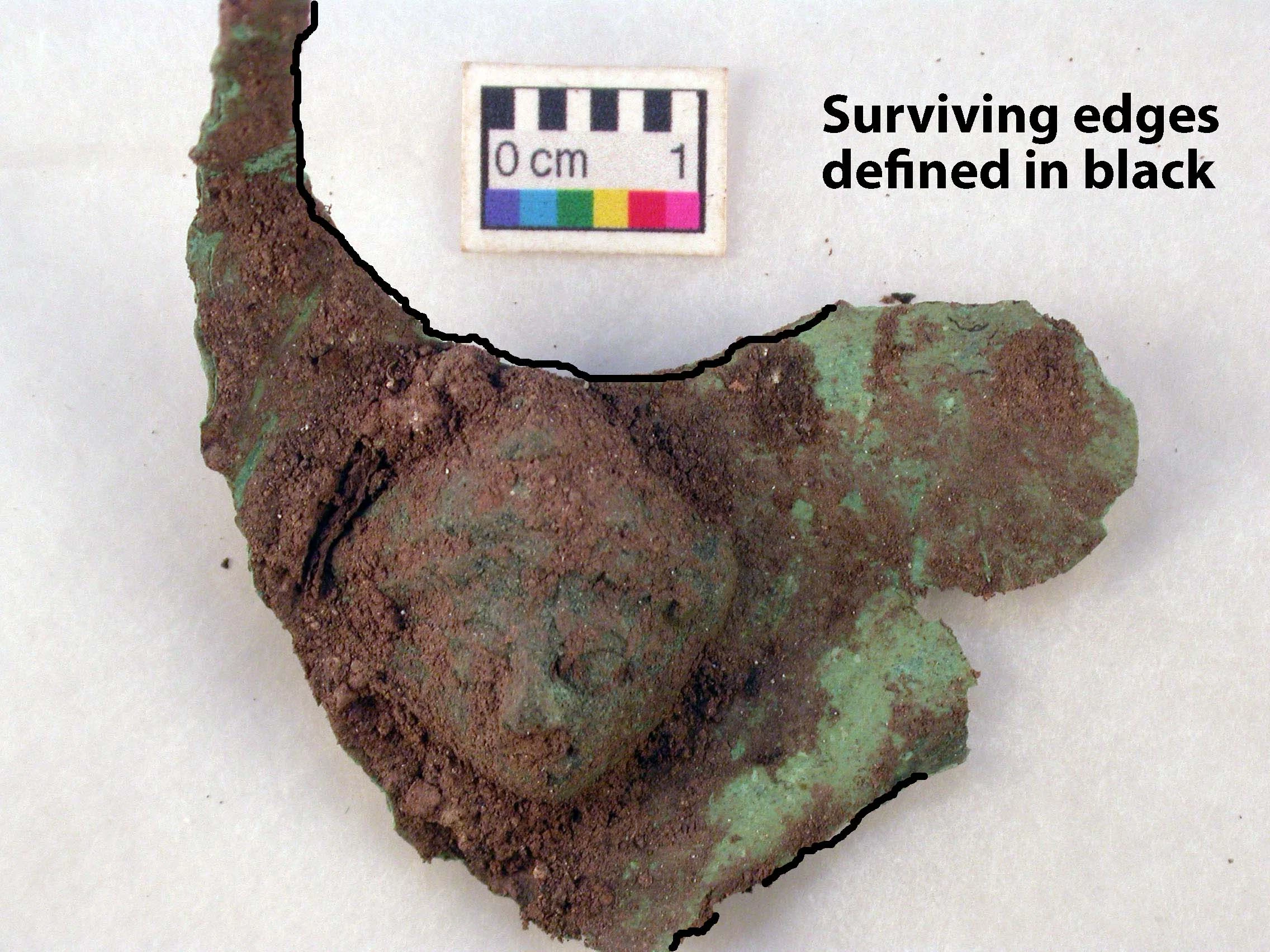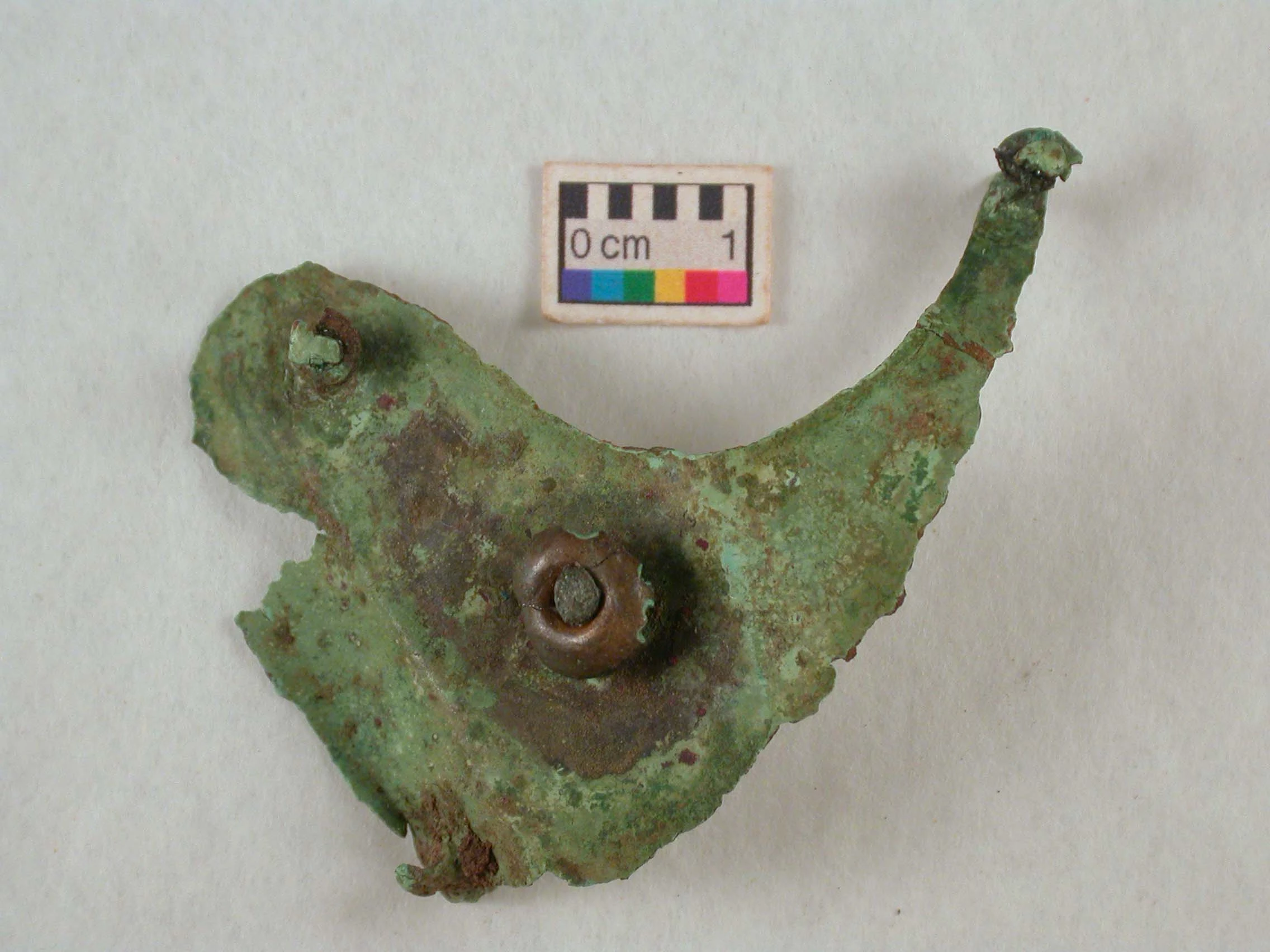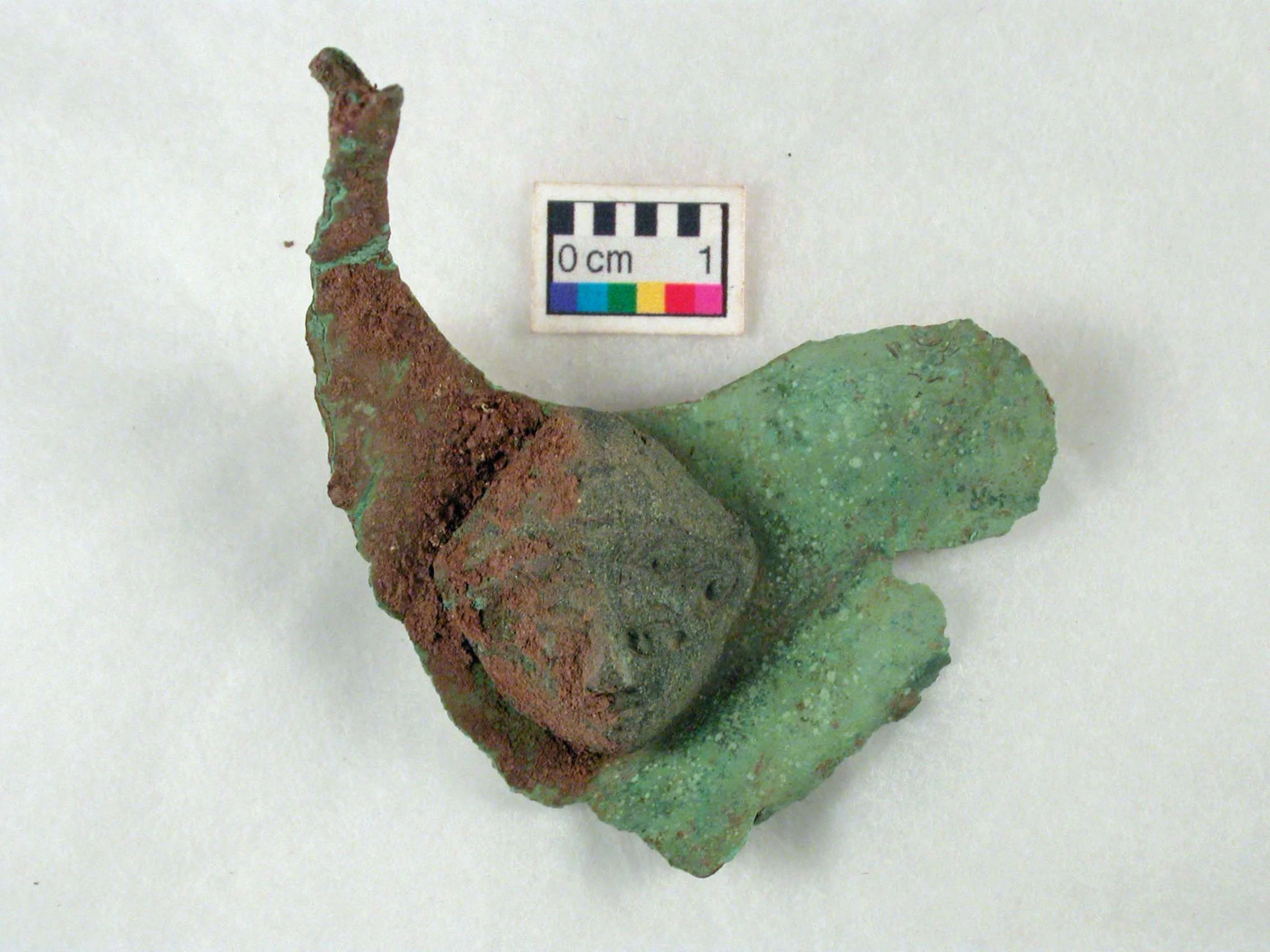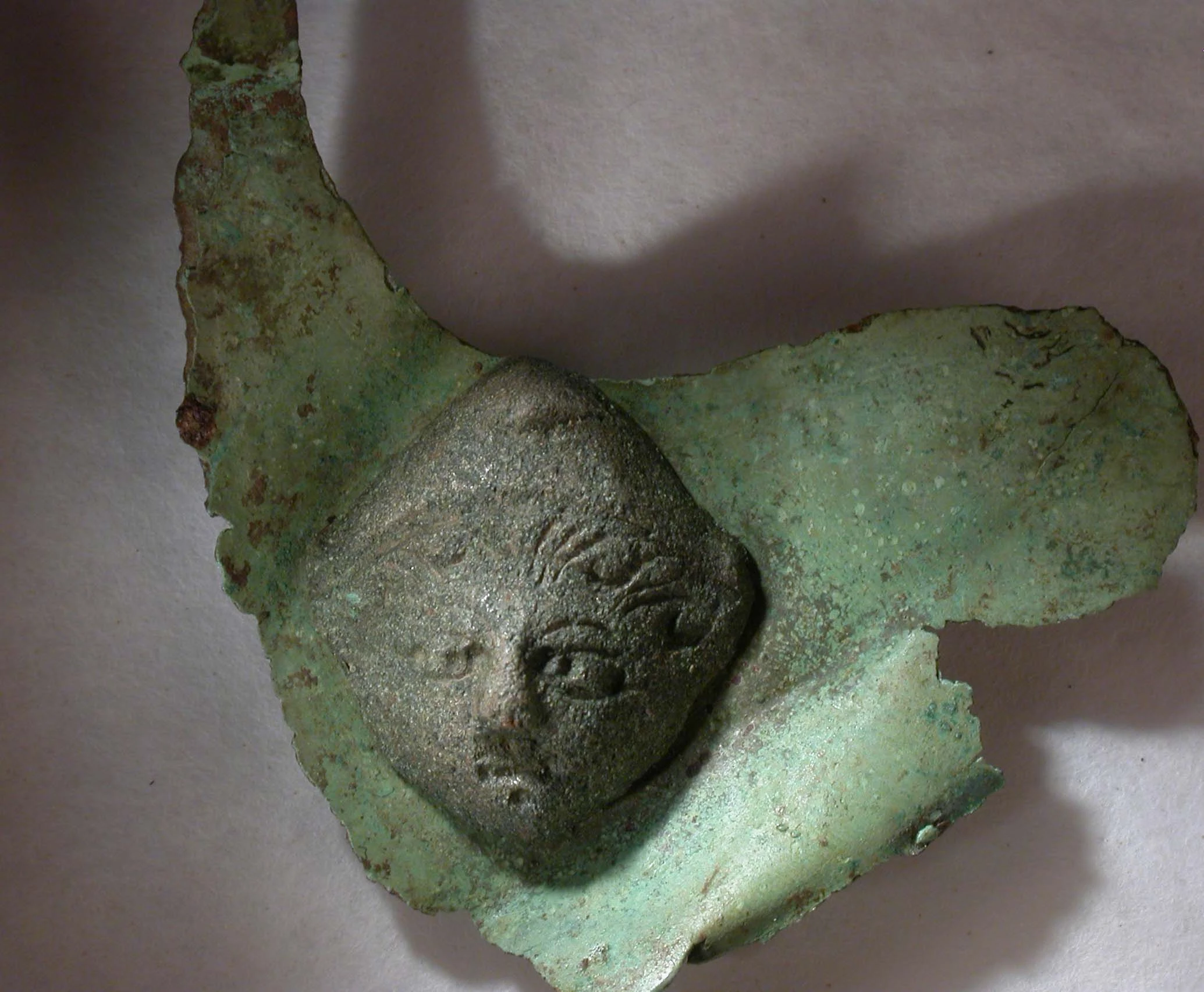Unearthing more mystery objects from a soil block lifted during excavations at the Roman site of Caerleon
, 6 January 2012
The second significant object in the same block as the pins (highlighted in the previous blog in this series) is an unusually shaped bronze sheet decorated with a stud depicting a human head. The head is wearing what appears to be a Phrygian cap. This type of soft, conical shaped hat with the top flopping forward was originally associated with people from the eastern part of the Roman Empire.
The head, cast in solid bronze, measures from ear to ear about 2cm. Soil and debris obscure the detail but I can see under this the features of a face peeking through, including large almond shaped eyes and curly hair poking out from under the cap. Looks a bit of a mischievous character to me!
The bronze sheet is an odd shape too; the edges are damaged and eroded in places. I’ve indicated with a black line the surviving edges I can be sure of. The damage on the other edges means unfortunately that they may not reflect the original dimensions of the object.
The sheet is not flat either, these bends and folds in the metal look like they were made in antiquity as the original patina is still smooth and undamaged around these areas. If the metal had been bent after the green patina was formed then this fragile surface would have cracked and flaked off revealing the metal below. So was this metal sheet originally wrapped round something more three dimensional? Difficult to say at this stage, it is also possible it got damaged in antiquity when flung on a pile of other armour and scrap, before it finally got buried. It’s amazing such delicate objects have survived at all!
When the sheet was lifted and turned over, four metal pins were found protruding out of the back. One, in the middle, belonged to the decorative stud; the pin had been punctured through the sheet to secure it. The three smaller pins are part of the sheet, created during the original casting by the looks of things.
Where the metal had been lifted there was a dark stain in the soil, probably the only evidence we will ever have that an organic material was once present. Among this there were fragments of a small doughnut shaped object. On further examination its original location could be identified as it was dislodged when the plate was lifted. The object lined up with the central stud and is in fact a washer or rove associated with securing items to leather. Two other tiny roves were found and all 3 have now been reattached to the pins at the back of the sheet. These now give us an indication of the thickness of the original backing material, which is about 3mm. The possible association with leather links this object to the pins lying near by. These were also applied to a flexible backing like leather; therefore there is a strong possibility that these artifacts were part of the same object, but more work has to be done to establish this.








Comments - (1)
And thank you VERY much for the additional photographs which I did not see before!